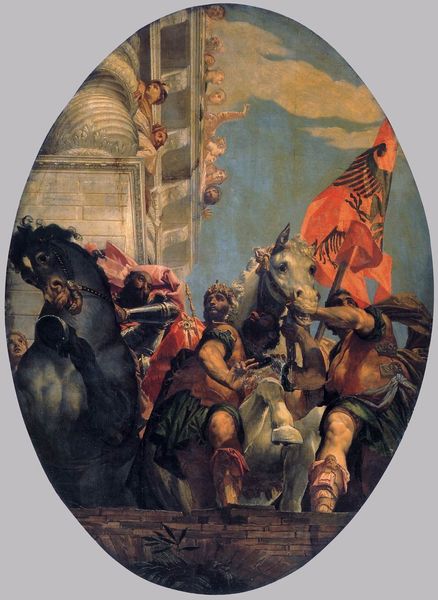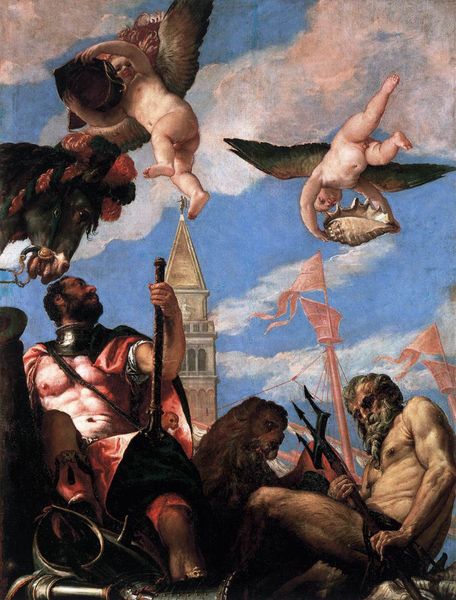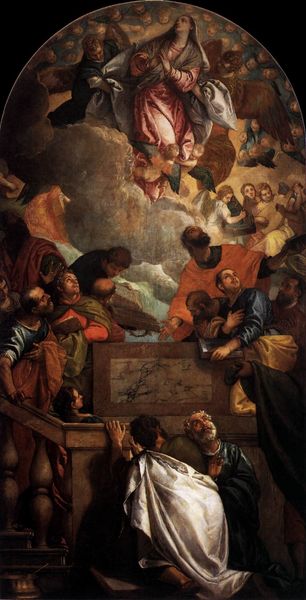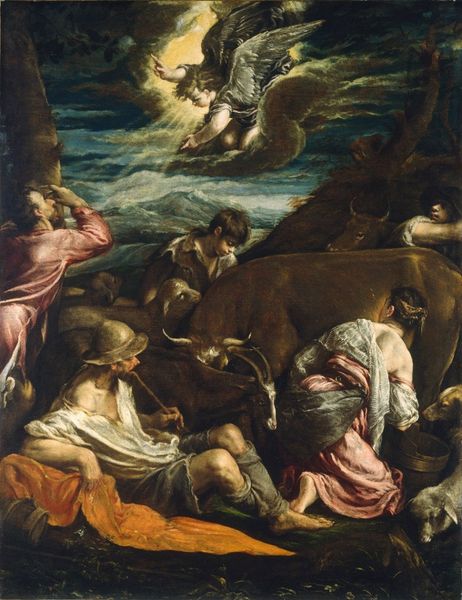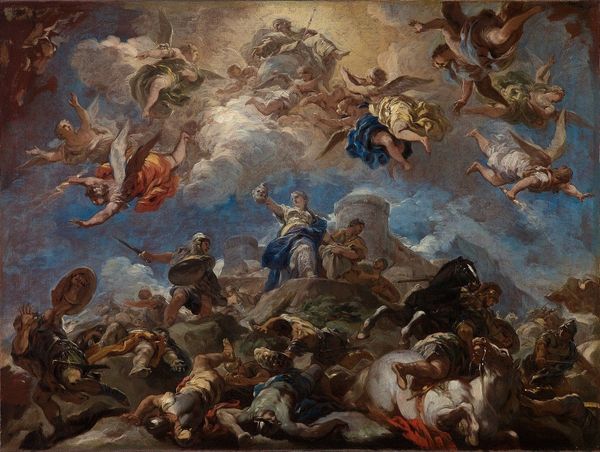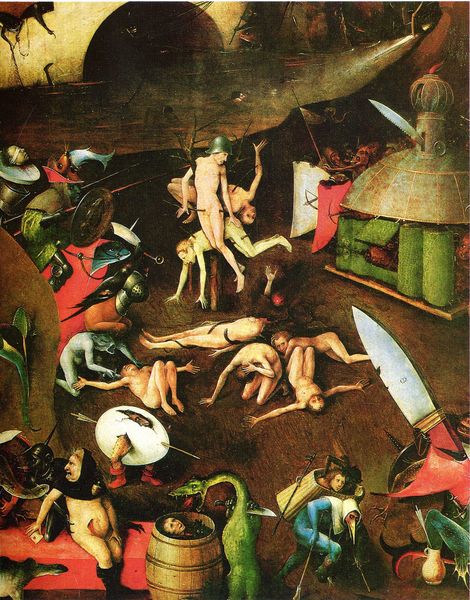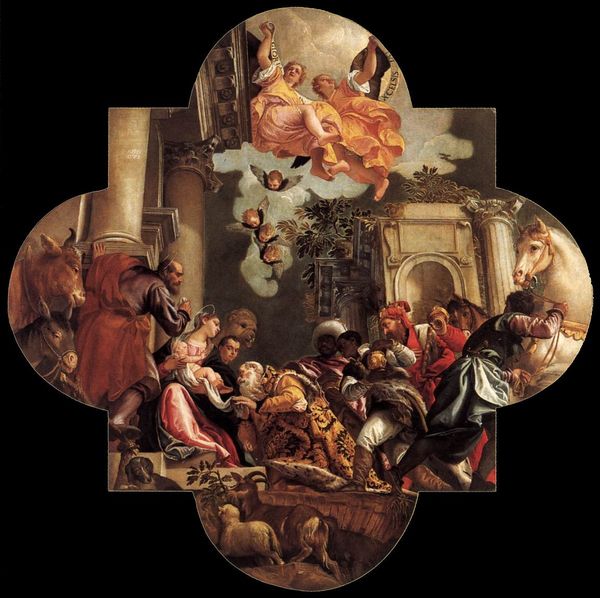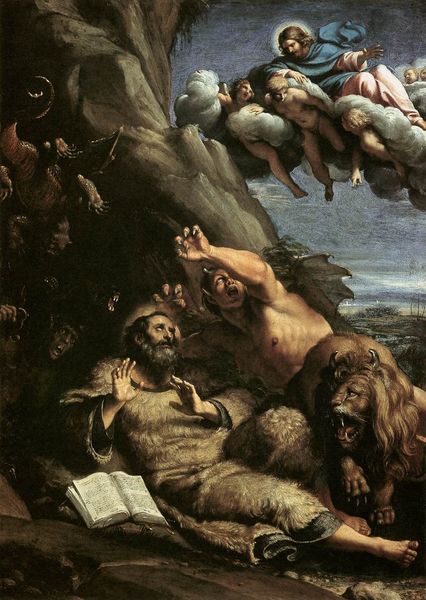
Assumption 1558
0:00
0:00
paoloveronese
Basilica dei Santi Giovanni e Paolo (San Zanipolo), Venice, Italy
#
unusual home photography
#
3d sculpting
#
sculpture
#
fountain
#
grungy
#
dark-toned
#
unrealistic statue
#
sculpting
#
earthy tone
#
arch
#
christianity
#
virgin-mary
#
ruin
#
angel
#
christ
Dimensions: 910 x 455 cm
Copyright: Public domain
Curator: Here we have Paolo Veronese's "Assumption," created in 1558. It currently resides in the Basilica dei Santi Giovanni e Paolo in Venice. My initial reaction is a sense of dynamic energy, a vortex pulling me upwards! What grabs you? Editor: Well, the composition hits me first, I am immediately sucked into the drama and swirling motion as you pointed out, the Virgin Mary seemingly spiraling into the heavens! There's a raw, almost theatrical energy, with everyone looking up. Curator: The theatrics were deliberate, playing to Venice's taste for grand spectacles. What you see is a careful manipulation of perspective and color, using these to emphasize the divine miracle unfolding above, but for whom? Editor: The drama does seem performative; maybe it highlights the communal awe of it all – a collective gasp! I am now curious of the perspective we have been given, what's the socio-historical perspective? Curator: "Assumption," became popular during the Catholic Reformation, reaffirming central doctrines amid the rise of Protestantism. Paintings like these were explicitly meant to inspire and persuade viewers in public spaces, the artist creating them to remind you that the only view that mattered was what religion gave you. Editor: Oh, I love how the scene is grounded in the tangible world, where the artist painted ordinary people as religious ones and put it on full display. Their robes are tattered, and expressions so varied! Are they truly awestruck, or are there some skeptics in the crowd? What's so shocking they feel the need to capture that with their quills? Curator: I'd argue that these figures capture Venice at the time, in that they represent a range of reactions—from pious wonder to scholarly analysis. It underscores art's role in expressing—and sometimes mediating—the shifting currents of faith and knowledge of society. Editor: It makes me wonder what Veronese himself truly believed. The painting feels alive. Like he's captured a real moment of change—not just illustrating a doctrine, or did he? Curator: Veronese operated in a world shaped by religious expectations and elite patronage. To express a true feeling meant that he had to find innovative approaches. Editor: Innovative for who or what may I ask. All to cause more or of the same type of emotion. This dialogue makes one reconsider all aspects, which is the beauty. Curator: Precisely! Hopefully, this brief glimpse inspires us to continue questioning and reflecting.
Comments
No comments
Be the first to comment and join the conversation on the ultimate creative platform.



